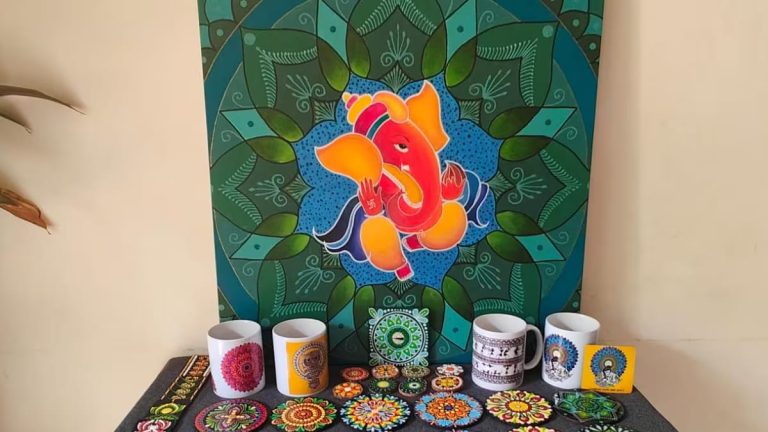Last updated:

Mandal art is a traditional form of Hindu intricate artwork.
Through Mandal art, Sumyabina skillfully captures the essence of landscape and decorative elements.
This is the story of Soumyabina, an IT professional who also loves art. She hails from the coast and works in Bangalore but remains passionate about being environmentally conscious and embracing a plastic-free lifestyle. Her dedication to art is seen as her spiritual practice, blending admiration for creativity with a commitment to teaching Mandal art forms such as Hase, Warli and Kavi.
Sumyabina is a revered figure in North Karnataka and Shivamogga, not only for her artistic skills but also for her role as an educationist and influential figure. She shares her expertise widely, including through educational videos on YouTube, to numerous students locally and globally. Her artistic creations range from wall frames to keychains, coffee mugs, bags, t-shirts, wedding cards and more.
Through mandal art, Soumyabina skillfully captures the essence of landscapes and decorative elements, providing personalized designs for a variety of purposes, including weddings and home décor. The 38-year-old earns a handsome annual income of Rs 40,000 to Rs 100,000 through her artistic endeavors. Her products are popular not just in India but internationally, with a growing clientele in countries like the United States, Canada, Dubai, and major Indian cities like Maharashtra, Hyderabad and Bangalore. The demand for her handmade products in her studio has increased year by year, reflecting her journey from self-taught artist to a respected mentor in Mandal art, a testament to her extraordinary professional and artistic achievements.
Mandala art is a traditional form of complex geometric artwork that has its origins in the Hindu and Buddhist traditions. The word “mandal” is derived from the Sanskrit word meaning “circle,” and these artworks often take the form of elaborate circular designs. Mandalas are often used as spiritual and ritual symbols to represent the universe, and are often used in meditation practices.
